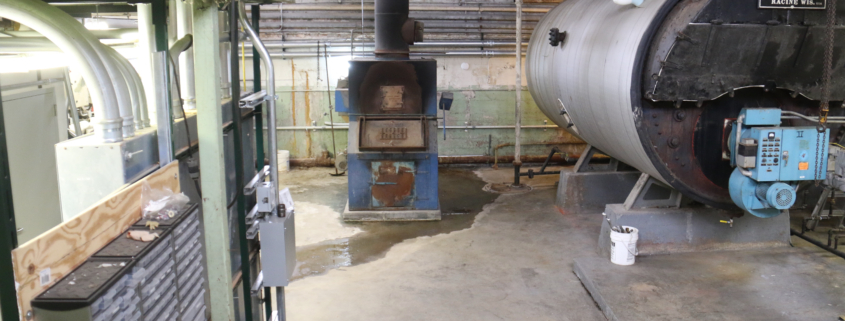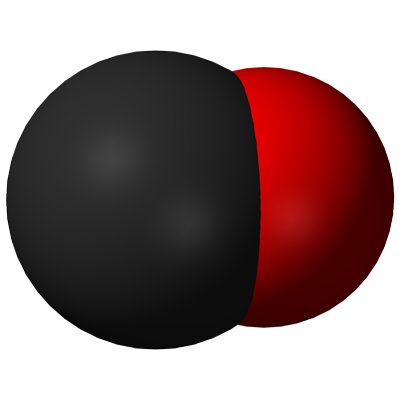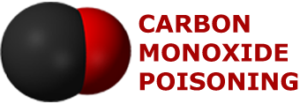
Understanding how carbon monoxide poisoning happens
Carbon monoxide poisoning happens when the exhaust from an engine or fuel burning appliance is vented, directly or indirectly, into the inside air (ambient air) of a house or other structure. Engines, particularly internal combustion engines, are never meant to be operated indoors.

How does carbon monoxide poisoning happen? It happens when maintenance of a fuel burning appliance is neglected or an internal combustion engine is run indoors.
Carbon monoxide poisoning never happens without someone being at fault[1], as fuel burning appliances are designed to burn with little CO in the exhaust and to have exhaust gases vented outside. For carbon monoxide poisoning to happen there is almost always a problem with the combustion of the appliance AND a failure to exhaust the now highly CO laden gases outside of the indoor air.
Carbon Monoxide Poisoning Happens as a Result of Neglect
In many cases, poor maintenance of fuel burning appliances, such as furnaces and boilers, will cause both of these problems. One of the biggest causes of CO buildup in an appliance is failure to maintain adequate oxygen (combustion air) for the fire to burn. This is often related to failure to keep the combustion air vents clear of debris and/or obstructions. Click here for an explanation of the relationship between negative pressure (reverse suction) and the creation of carbon monoxide in exhaust gases.
Other common causes of carbon monoxide poisoning include breaches in flue pipes, poor maintenance of the burners and internal parts of such appliances and abject neglect of pool heaters and their component parts.
As carbon monoxide has no actual odor and is invisible (and tasteless), severe buildups in CO can happen with little or no warning. If those being poisoned don’t connect the sudden, simultaneous illness to an environmental cause, they may collectively lose consciousness so quickly that any rescue will be too late. Only properly functioning carbon monoxide alarms can warn against the dangers of CO.
Teaching Combustion Sense to Prevent Carbon Monoxide from Happening
In addition to alarms, prevention of carbon monoxide poisoning also has to include the application of common sense. Common sense for me for someone who works in maintenance of hotels, apartments or homes, must be different than for the average person.
In reality what all people who work around fuel burning appliances must have combustion sense. What is combustion sense? Combustion sense is the understanding simple principles about heat, fires, rust and corrosion and making sure there aren’t flaws in how flue gases get outdoors.
We Must Educate All Maintenance Personnel
We must do a better job of informing the public and especially hotel workers, maintenance personnel and apartment management about the basic principles of combustion. One of the principal purposes of this website is to do such education.
- Hot air rises. Hot air is lighter than cold air and gravity will send it upward.
- Fire must be Exhausted. If a fire is started inside a structure, people will die unless the smoke and carbon monoxide from such fire is provided a direct path out of the building. The normal physics for the exit of hot gases its up a flue (or chimney), is for the hot air to rise, naturally or through mechanical ventilation.
- Fire requires oxygen. Complete combustion (no creation of CO) requires sufficient The oxygen that an appliance uses is its combustion air. Like with exhaust gases, there has to be a pathway for the oxygen to get to the flame. Disrupt the flow of oxygen and the result is incomplete combustion. The interconnection between the two is that if there is an interruption with the draft of the flue gases out of the appliance, there will likely be an interruption with the flow of oxygen into the appliance.
- Appliances are machines. All machines wear out. Mechanical devices have useful lives. If an appliance is past its useful life, it will eventually have a catastrophic failure. If you never service the brakes on a car, at some point the brakes will fail.
- Run to failure policies may result in the failure of the human heart–from carbon monoxide related hypoxia. It takes less CO to damage the brain than to cause a heart attack.
- Read and Keep Reading the Manual. All appliances are sold with an Owner’s manual (OEM). These manuals dictate not only how they should be installed but how they should be maintained. If you lose the manual, go online to the manufacturer of the appliances website and download the manual, such as here, for a Rheem Furnace.
[1] Such as in operating an internal combustion engine indoors. Portable electric generators are the chief cause of carbon monoxide poisoning and deaths from engines because the levels of CO in the exhaust of these small engines can approach 100,000 ppm. Concrete saws, chain saws and even lawnmowers have comparable levels of CO in their exhaust as well. Operating such engines in attached garages is almost as bad as operating them inside the home, because the CO levels are so high that can kill quickly once they make their way into a home. Attached garages are never adequately sealed to protect against such high concentrations of CO.
